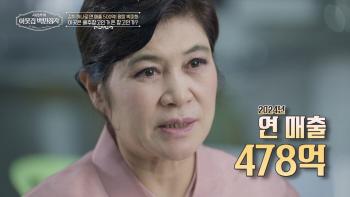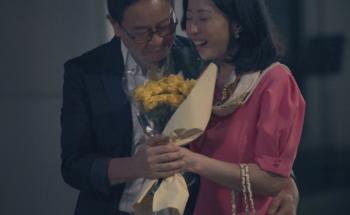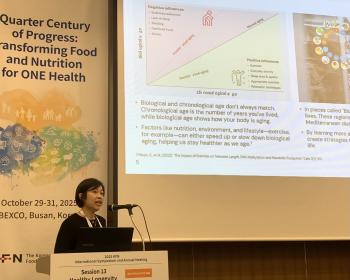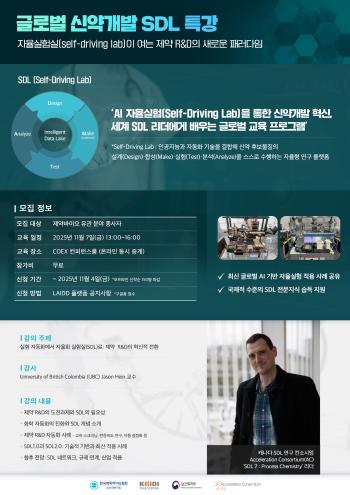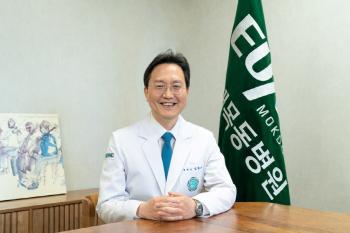Heart transplant after 1296 days of left ventricular assistive device (LVAD) wear...He's back to heart health after 20 years
Apr 01, 2025
Dongtan Sacred Heart Hospital of Hallym University said that A (45, female), who succeeded in LVAD surgery for the first time in Gyeonggi Province in 2018, succeeded in heart transplantation in May 2022 after wearing LVAD for 1296 days, and has been in good health for three years since then.
A has suffered heart failure since 2002 when he was 23 years old, and since then, his heart failure has worsened, and he was diagnosed with dilated cardiomyopathy of unknown cause in 2010.
dilated cardiomyopathy is a disease in the late stage of heart failure in which the heart function decreases as the heart becomes enlarged, and the ultimate treatment is heart transplantation. Mr. A's heart failed to function properly, and his whole body function deteriorated, and he was hospitalized and discharged repeatedly. Mr. A said at the time, `My legs were so swollen that when I stepped on the floor, my body seemed to be floating in the air, and I had unbearable pain every day."
A registered as a waiting person for heart transplantation at the National Organ Transplant Management Center, but continued to wait without promise due to the low ranking of waiting people for transplantation. As symptoms worsened while waiting for transplantation, LVAD surgery was suggested as an alternative. LVAD is a device that can maintain heart function before heart transplantation by connecting artificial pumps to the heart and aorta through thoracotomy. However, good news came to A, who was in despair due to the high cost of more than 300 million won. In October 2018, the Ministry of Health and Welfare decided to apply health insurance for LVAD, allowing them to undergo LVAD surgery by paying only 5% of the treatment fee.
The LVAD team, consisting of cardiovascular heart failure specialists, thoracic surgeons, dedicated nurses, social work teams, and pharmaceutical teams, prepared for surgery. On October 23, 2018, A, who successfully underwent LVAD surgery at Hallym University Dongtan Sacred Heart Hospital, wore LVAD for 3 years and 6 months under the supervision of medical staff. This is 42 months in months and 1296 days in days.
On May 11, 2022, A finally received a heart transplant at Hallym University Dongtan Sacred Heart Hospital. Mr. A, who underwent successful transplant surgery, has been living a healthy life for nearly three years so far.
Mr. A said, "I have suffered heart failure since I was 23 years old, and after 20 years, I received a healthy heart as a gift.'"After receiving a heart transplant, I am indescribably good. Before, it was so hard to breathe and I couldn't sleep properly, so I even had depression. Now that I can sleep comfortably and live my daily life, the depression disappears and I'm very happy."
Heart failure is a disease caused by decreased heart function and insufficient blood supply to various organs. In particular, a condition in which heart function does not recover even after medication, symptoms persist, and deterioration is repeated is called severe heart failure. Heart transplantation is considered as the final treatment if a patient with severe heart failure is irreversible and the expected survival rate is low.
However, there are only a few cases of actual heart transplants. The number of patients requiring heart transplants is increasing every year, but the number of donors is decreasing. According to statistics from the National Institute of Organ Tissue Blood Management last year, there were 1110 people waiting for heart transplants from 2019 to June 2024, but 634 people died without receiving the transplant during the same period. The average number of waiting days for heart transplants was 385 days, over a year.
As the waiting period for severe heart failure patients who need heart transplantation increases, more and more patients maintain heart function until they receive heart transplantation through LVAD surgery.
In particular, studies on the superiority of LVAD as a bridge treatment' that acts as a bridge before receiving a heart transplant are also being published. Previously, it was known that LVAD surgery before heart transplantation increases the complexity of treatment and has a worse prognosis than patients who receive heart transplantation immediately without LVAD due to complications caused by LVAD.
However, a paper published in the SCIE-level international journal 'Journal of Clinical Medicine' this year showed no difference in survival and complication rates after 7 years of surgery between the group receiving heart transplant after LVAD surgery and the group receiving heart transplant without LVAD surgery. It was analyzed that this is because some of the heart function is restored during the wearing of LVAD, and the function of other organs is also restored.
"Severe heart failure patients can die from multiple organ failure, and even if they receive heart transplants due to pulmonary arterial hypertension or kidney failure, the results are not good," said Lee Sook-jin, a professor of circulatory medicine at Hallym University's Dongtan Heart Hospital. "LVAD restores the function of other organs along with the heart function, allowing patients to sustain life until heart transplantation, and can achieve good results when they receive heart transplants later."
In addition, Professor Lee stated that despite the many advantages of LVAD, patients sometimes hesitate to treat LVAD as it requires strict care when wearing it and requires close care from their guardians. "However, severe heart failure is a condition in which heart failure continues to worsen without responding to medication and device treatment performed by conventional heart failure, so the appropriate timing of treatment should not be missed."
A has suffered heart failure since 2002 when he was 23 years old, and since then, his heart failure has worsened, and he was diagnosed with dilated cardiomyopathy of unknown cause in 2010.
dilated cardiomyopathy is a disease in the late stage of heart failure in which the heart function decreases as the heart becomes enlarged, and the ultimate treatment is heart transplantation. Mr. A's heart failed to function properly, and his whole body function deteriorated, and he was hospitalized and discharged repeatedly. Mr. A said at the time, `My legs were so swollen that when I stepped on the floor, my body seemed to be floating in the air, and I had unbearable pain every day."
A registered as a waiting person for heart transplantation at the National Organ Transplant Management Center, but continued to wait without promise due to the low ranking of waiting people for transplantation. As symptoms worsened while waiting for transplantation, LVAD surgery was suggested as an alternative. LVAD is a device that can maintain heart function before heart transplantation by connecting artificial pumps to the heart and aorta through thoracotomy. However, good news came to A, who was in despair due to the high cost of more than 300 million won. In October 2018, the Ministry of Health and Welfare decided to apply health insurance for LVAD, allowing them to undergo LVAD surgery by paying only 5% of the treatment fee.
The LVAD team, consisting of cardiovascular heart failure specialists, thoracic surgeons, dedicated nurses, social work teams, and pharmaceutical teams, prepared for surgery. On October 23, 2018, A, who successfully underwent LVAD surgery at Hallym University Dongtan Sacred Heart Hospital, wore LVAD for 3 years and 6 months under the supervision of medical staff. This is 42 months in months and 1296 days in days.
On May 11, 2022, A finally received a heart transplant at Hallym University Dongtan Sacred Heart Hospital. Mr. A, who underwent successful transplant surgery, has been living a healthy life for nearly three years so far.
Mr. A said, "I have suffered heart failure since I was 23 years old, and after 20 years, I received a healthy heart as a gift.'"After receiving a heart transplant, I am indescribably good. Before, it was so hard to breathe and I couldn't sleep properly, so I even had depression. Now that I can sleep comfortably and live my daily life, the depression disappears and I'm very happy."
Heart failure is a disease caused by decreased heart function and insufficient blood supply to various organs. In particular, a condition in which heart function does not recover even after medication, symptoms persist, and deterioration is repeated is called severe heart failure. Heart transplantation is considered as the final treatment if a patient with severe heart failure is irreversible and the expected survival rate is low.
However, there are only a few cases of actual heart transplants. The number of patients requiring heart transplants is increasing every year, but the number of donors is decreasing. According to statistics from the National Institute of Organ Tissue Blood Management last year, there were 1110 people waiting for heart transplants from 2019 to June 2024, but 634 people died without receiving the transplant during the same period. The average number of waiting days for heart transplants was 385 days, over a year.
As the waiting period for severe heart failure patients who need heart transplantation increases, more and more patients maintain heart function until they receive heart transplantation through LVAD surgery.
In particular, studies on the superiority of LVAD as a bridge treatment' that acts as a bridge before receiving a heart transplant are also being published. Previously, it was known that LVAD surgery before heart transplantation increases the complexity of treatment and has a worse prognosis than patients who receive heart transplantation immediately without LVAD due to complications caused by LVAD.
However, a paper published in the SCIE-level international journal 'Journal of Clinical Medicine' this year showed no difference in survival and complication rates after 7 years of surgery between the group receiving heart transplant after LVAD surgery and the group receiving heart transplant without LVAD surgery. It was analyzed that this is because some of the heart function is restored during the wearing of LVAD, and the function of other organs is also restored.
"Severe heart failure patients can die from multiple organ failure, and even if they receive heart transplants due to pulmonary arterial hypertension or kidney failure, the results are not good," said Lee Sook-jin, a professor of circulatory medicine at Hallym University's Dongtan Heart Hospital. "LVAD restores the function of other organs along with the heart function, allowing patients to sustain life until heart transplantation, and can achieve good results when they receive heart transplants later."
In addition, Professor Lee stated that despite the many advantages of LVAD, patients sometimes hesitate to treat LVAD as it requires strict care when wearing it and requires close care from their guardians. "However, severe heart failure is a condition in which heart failure continues to worsen without responding to medication and device treatment performed by conventional heart failure, so the appropriate timing of treatment should not be missed."
|
This article was translated by Naver AI translator.


